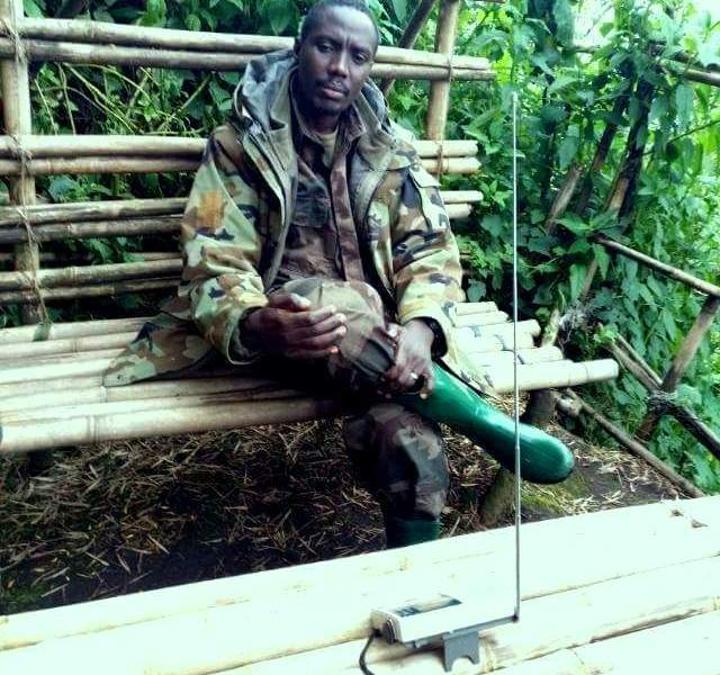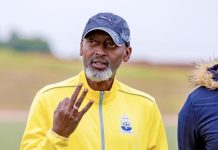Africa-Press – Rwanda. Christoph Vogel, researcher and investigator specializing in armed groups in the DRC has revealed several details on the controversy between the DRC and Rwanda around the M23 rebellion.
Since last November, the March 23 Movement (M23) has resumed its military activities in the east of the Democratic Republic of Congo. This week, when they were the victims of a new incursion by this rebel movement, the Congolese armed forces openly accused neighboring Rwanda of having taken part in this attack, showing two suspected soldiers of the Rwandan army captured. What’s going on ? Are these accusations true? Who is right ? What is really happening on the ground.
New clashes took place in eastern DRC. What do we really know about what happened?
These clashes took place between the FARDC and ex-M23 units, now known as the ARC. They are part of a series of skirmishes that have opposed the two forces for several months, and in a broader sense, the return of the said ex-M23 units to the DRC since the end of 2016, when they settled in the border triangle between DRC, Uganda and Rwanda.
What is the M23 looking for and why these sudden attacks?
It emerges from public and formal communications that the M23 first seeks recognition by Kinshasa. It should be remembered that, after its military defeat, the movement found itself in negotiations with Kinshasa.
These had never formally come to fruition. From the Congolese government’s point of view, a negotiation between equals was not appropriate, given the apparent military victory. On the M23 side, this point of view was not shared and it emerges from numerous communications since 2013 that the movement believes that neither the demands that led to the creation of this rebellion in 2012, nor the preliminary results of the Kampala talks in 2013 and 2014 would have been applied.
However, the ex-M23 present in eastern Rutshuru since 2016/2017 may have seen the context of the state of siege and then the auspices of a new national DDR program as a prime time to increase military pressure on the government.
Nevertheless, it is not entirely clear what combination or contingency of events shaped the precise timing of this escalation.
Kinshasa openly accuses Rwanda of having supported elements of the M23 in these clashes. They exhibited two presumed Rwandan soldiers arrested at the front. What Kigali denies. Who is telling the truth?
Indeed, two people were presented on the evening of March 28 in Goma. There is a press release from an armed group known as the “Collective of movements for change”, itself hostile to the ex-M23, dated January 2022, which cited one of the two names put forward by the spokesperson of the military government of North Kivu. It is therefore not easy at this stage to confirm one of the different versions circulating, because no version has been publicly displayed and accompanied by complete documentation as to the various questions associated with it.
A MONUSCO reconnaissance helicopter crashed in the area of the clashes on March 29. What do we know about this event?
Different actors rushed to give their version of the crash. However, pending a professional analysis of the wreckage, as well as a ballistic investigation in case the hypothesis of an accident is ruled out, it seems premature to assign responsibility. It is therefore appropriate to be patient, not only to avoid a recovery from this tragedy, but also to avoid putting more heat on the oil in a general context marked by a number of tensions.
While relations between Kinshasa and Kigali seemed to be in good shape, with the visits of President Felix Tshisekedi to Kigali and those of Paul Kagame to Kinshasa and the signing of commercial contracts, what justifies this sudden escalation?
Here, one must certainly take into account the different levels and scales potentially involved. Although Rwandan support for Congolese rebellions such as RCD-Goma and CNDP has been amply proven in the past, this support was already much more indirect during the M23 era in 2012 and 2013.
Why does this matter? Indeed, many analyzes paint a “flat” picture of the conflicts in the region. Such a perspective makes it difficult to gauge all the actors and their motivations.
The leaders of the M23, in this case, have long been torn between proximity to certain neighboring countries and their own agenda which may or may not coincide with that of Kigali.
Identifying a rebellion like the M23 as a mere pawn of Rwanda does not necessarily do justice to the complexity of the conflict.
Although the outcome of the current escalation is difficult to predict, it is therefore not an automatic determinism that relations between Kinshasa and Kigali evolve according to the military situation.
Nevertheless, given the history marked by a number of tensions, the risk of an impact on this beau-fixe also exists.
Could this be linked to Kinshasa’s decision to launch joint operations with the Ugandan army?
Many analysts and diplomats argue this hypothesis, but political dynamics offer avenues for different answers to this question.
On the one hand, relations between Kampala and Kigali have not been good in recent years, and thus the UPDF intervention in North Kivu and Ituri is viewed with some suspicion, especially in the event that it extends to the Rutshuru area, neighboring territory to both Rwanda and Uganda, where the escalation around the M23 is taking place. On the other side, intense diplomacy has taken place between the two neighboring capitals for several weeks, notably through visits which have brought the head of the Ugandan army to the Rwandan president.
Militarily, is the Congolese army capable of defeating the M23? What would be the ideal solution to end this conflict?
From a personal point of view as a researcher who is interested in conflicts and armed mobilization, I doubt that a military solution alone can put an end to wars or conflicts.
The example of the ADF around Beni shows this as much as other conflicts at the international level such as the invasion of Ukraine. Nevertheless, the Congolese army has its constitutional role to play, which consists in particular in the protection of the national territory along the borders of the DRC.
On the other hand, and given the longevity of the conflicts in the east of the DRC, the multitude of belligerents operating in the region but also the diplomatic channels between Kinshasa, Kigali and Kampala, it would be desirable not to cut off communication during a situation so tense.
In addition, in view of a new national DDR program that is looming, it is equally necessary to create convincing paths and scenarios for those who have taken up arms.
This should translate neither into impunity for war crimes, nor into a situation of double standards, but towards a vision that pays more attention to the realities of life of civilian populations as well as combatants.
Is there a risk of seeing the Rwandan and Ugandan armies clash again on Congolese soil?
At this stage, this risk still seems quite low. Although the famous battle of Kisangani created a dangerous precedent, the situation today is markedly different.
In the light of the recent judgment of the International Court of Justice against Uganda, which provides reparations for the benefit of the DRC, but also the strong international reaction towards Rwanda during the capture of Goma by the M23 in 2012, such scenario seems diplomatically quite costly for the two countries in question.
Nevertheless, tensions have recently marked relations between Kigali and Kampala. All the more so, historically, the two neighbors of the DRC have seen eastern Congo as a zone of natural influence – geographically distributed in an area of Ugandan interest which covers the Far North around Beni and Butembo as well as the Ituri and another, called the Petit Nord, along the Rwandan border with North Kivu.
Much will depend on the strategic calculations of both countries, although it does not appear that either country would be overtly belligerent towards the other in the specific context around M23. While Rwanda has made no sign of wanting to intervene directly, Uganda has carefully limited itself to engaging the M23 in the immediate vicinity of its borders.
For More News And Analysis About Rwanda Follow Africa-Press






